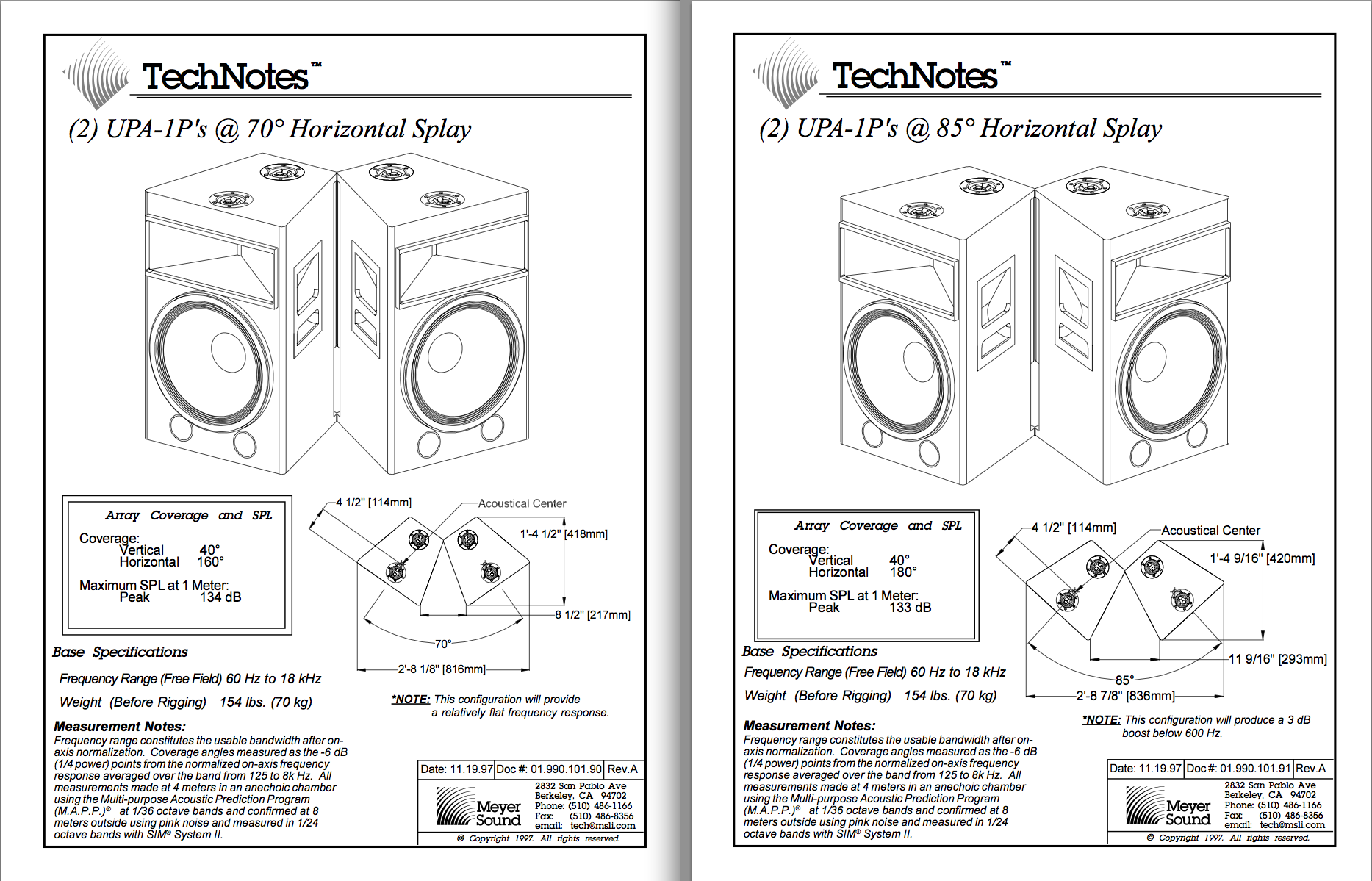While looking for some other details about how to correctly splay (2) cabinets based on their horizontal dispersion, I came across this jewel. Leave it to Meyer to spell it all out for you…
Here you can see how different splay angles between the two same cabinets affects their combined performance.
Meyer Sound – Technotes 2 UPA-1p 70 degree horizontal splay PDF
Meyer Sound – Technotes 2 UPA-1P 85 degree horizontal splay PDF
UPA-1P Data Sheet
UPA-P Series Operating Instructions PDF
Here is a screenshot:
(2) UPA-1P cabinets splayed 70 degrees apart (center to center) will provide a relatively flat frequency response. If you same cabinets are splayed 85 degrees apart (center to center), you get a 3db boost below 600. Interesting. This suggests (and I believe it to be so) that there is a window with which you can splay cabinets and they will still work as a team. This window is between too much overlap and leaving holes in the coverage. It’s actually a larger window that I would expect.
(2) UPA-1P with a horizontal dispersion of 100 degrees will have a 160 degree horizontal dispersion when the cabinets are splayed 70 degrees apart and a 180 degree horizontal dispersion when the cabinets are splayed 85 degrees.
70 degree splay = flat frequency response / 160 degree horizontal dispersion pattern
85 degree splay = 3db boost from 600 down / 180 degree horizontal dispersion pattern
Meyer even goes so far as to indicate that with the backs of the cabinets touching, you need an 8.5 inch / 217mm space between the fronts of the cabinets for 70 degrees and 11 9/16inch / 293mm space between the fronts of the cabinet for 85 degrees. No guess work.
With a 70 degree splay using 100 degree speakers that provides 160 degrees of coverage, your cabinets are overlapping by 20 degrees.
With a 85 degree splay using 100 degree speakers that provides 180 degrees of coverage, your cabinets are overlapping by 10 degrees.
What I would like to understand next is whether or not that window is any bigger. Can you overlap only by 5 degrees without having a HF hole? Can you overlap by more than 20 degrees without experiencing unacceptable comb filtering?
I aim to find out.


